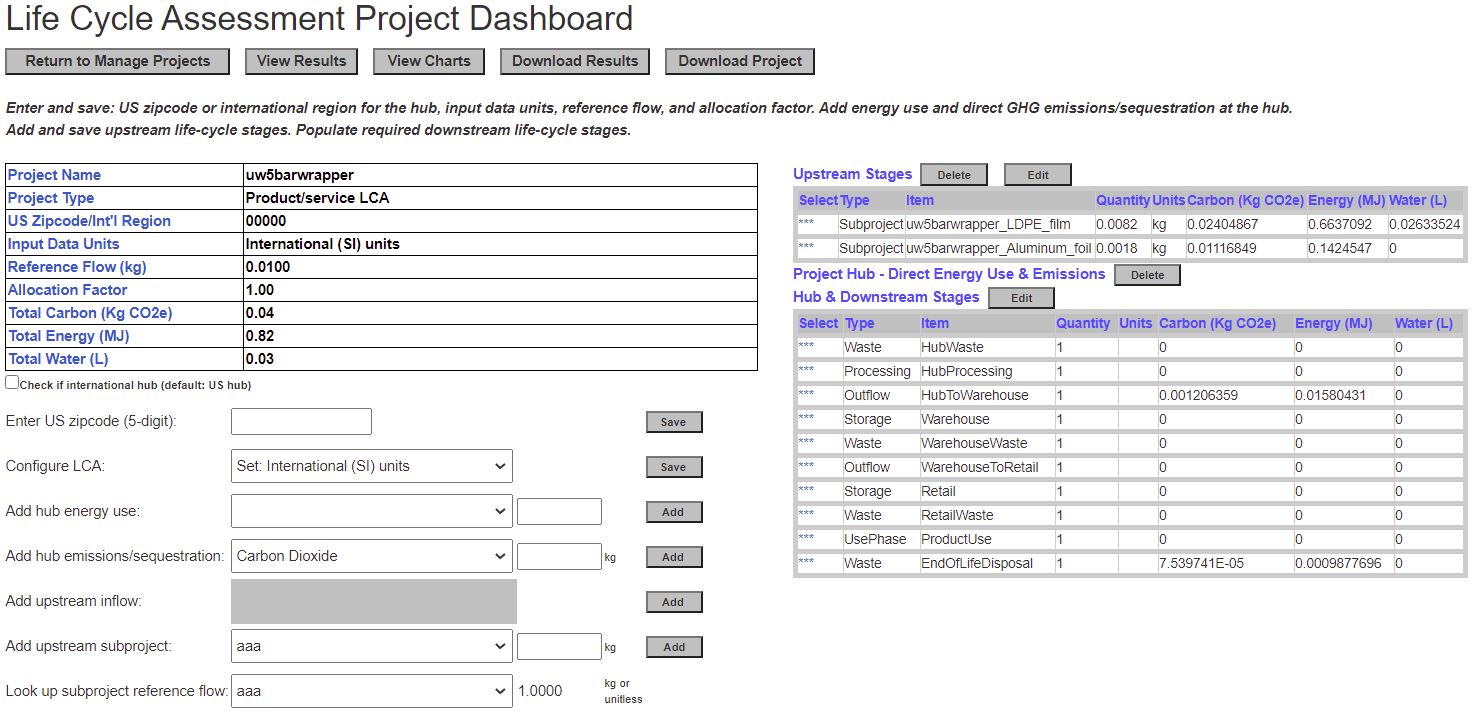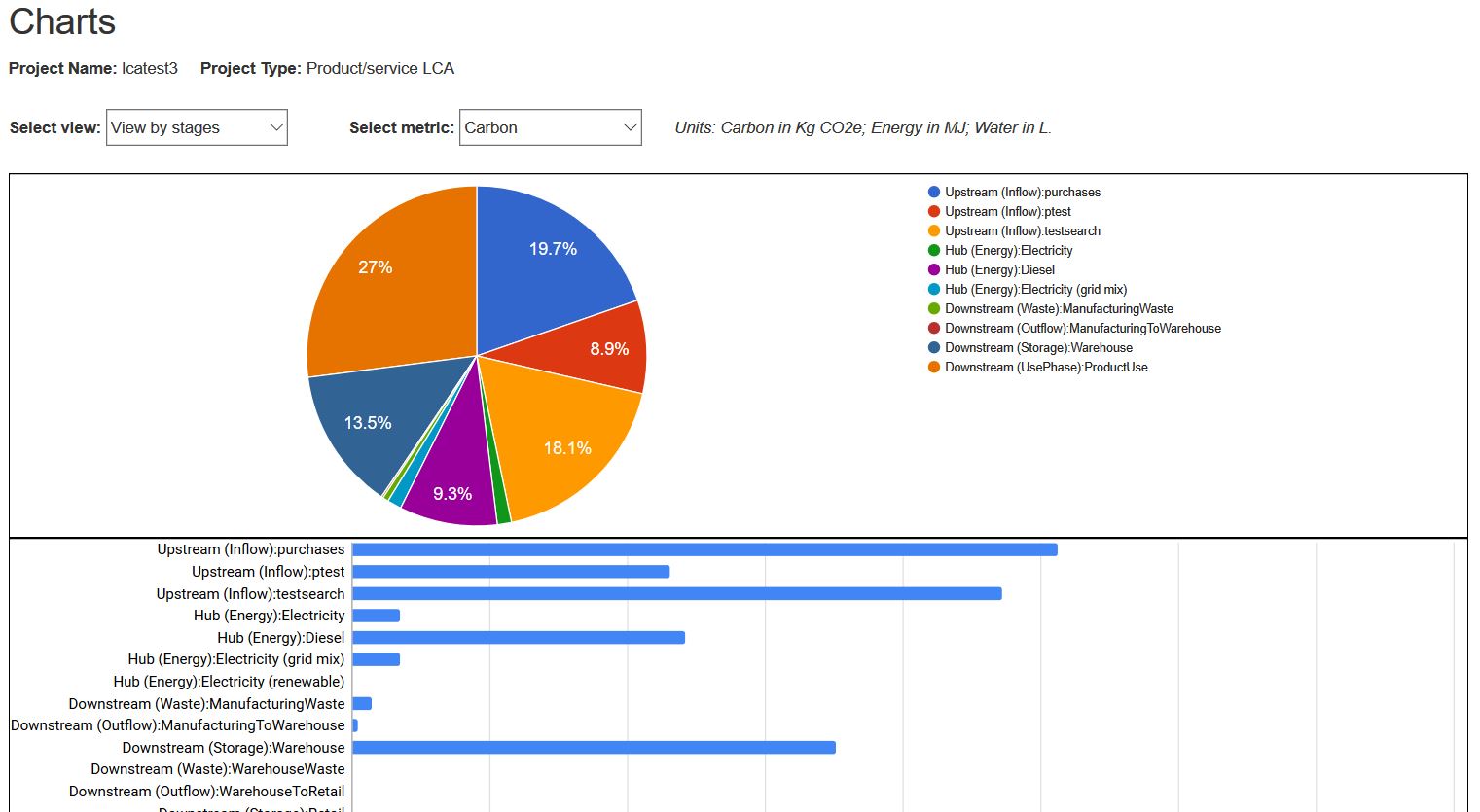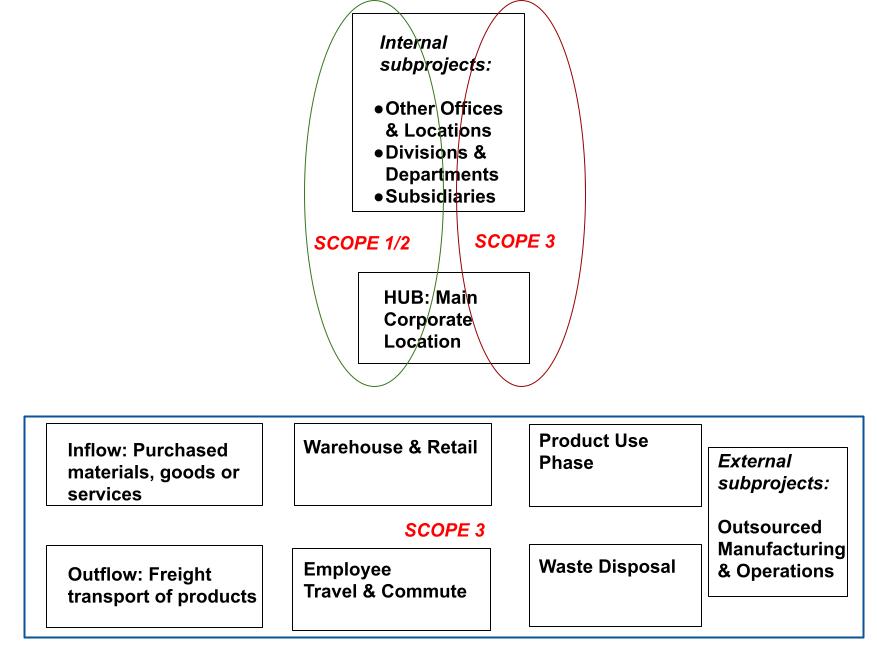What is CarbonScope?
Key Things to Know About CarbonScope
Life Cycle Assessments and Carbon Footprints for Products and Services
Corporate Greenhouse Gas Inventories
Life Cycle Inventory Data
Industry Sectors
Standards
Pricing and Availability
Quick Peek Inside CarbonScope
What is CarbonScope?
CarbonScope is an innovative, affordable and easy-to-use carbon modeling tool that can do everything from corporate greenhouse gas inventories to life-cycle assessments of products and services. CarbonScope is a web app that is compliant with international standards for GHG inventories, LCAs and product carbon footprinting. And it comes packaged with an extensive life-cycle inventory database. CarbonScope is offered on an annual subscription and is priced right for businesses of all sizes operating in most sectors.
Key Things to Know About CarbonScope
- The first thing to know about CarbonScope is that you don't have to be a carbon footprinting expert to use CarbonScope. You can put together a standards-compliant streamlined product LCA (for product carbon footprinting) or corporate GHG inventory easily and see useful results quickly.
- If you are an experienced user, you can develop more complex LCAs and GHG inventories using the advanced (but still intuitive and elegant) modeling features in CarbonScope.
- With our extensive life-cycle inventory database integrated with CarbonScope, you'll spend minimal time hunting for emission or footprint factors. You can also browse and search the LCI database directly.
- You can slice and dice the results in different ways and display them in multiple formats (tables, charts and downloadable Excel spreadsheets).
- Annual subscriptions are priced affordably, so cost will not be an obstacle to determining the environmental and climate impacts of your products and business operations. Our goal is to get you to the next step where you can start thinking about how to reduce or offset your impacts.
Life Cycle Assessments and Carbon Footprints for Products and Services
Life-cycle assessments are based on a template consisting of upstream stages (such as production and delivery of raw materials or components), a project hub (representing the primary manufacturing/assembly location) and downstream stages (such as product warehousing and delivery, use phase, and waste disposal). This template is easy to customize. Simple LCAs based on secondary life-cycle inventory data can be put together very quickly in CarbonScope. More complex constructs (such as sub-projects, hierarchical modeling and
hybrid LCI modeling) are available for building highly customized life cycle models of products and services. Advanced features such as sensitivity analysis and mass-balance checks are available to help build robust LCA models. LCAs in CarbonScope model and report three key life-cycle impact categories:
GHG emissions, energy consumption, and water consumption.
Corporate Greenhouse Gas Inventories
Corporate greenhouse gas inventories can be assembled easily. Typical inventories might consist of a project hub (such as the corporate headquarters) and multiple facilities/operations at various geographical locations. In addition,
corporate inventories can include purchased materials, employee travel and commuting, warehousing and transport of finished products, retail locations, waste disposal, and product use phases. GHG emissions, energy use and water use are assigned to the correct scopes (1, 2 or 3) throughout the modeling and analysis. As with LCAs, constructs such as sub-projects and hierarchical modeling can be used to model complex corporate structures. CarbonScope supports hybrid LCI methodologies to significantly ease the development of corporate inventories: for example, input-output LCI data can be used to model scope 3 items such as purchased materials where some uncertainty can be tolerated while process LCI data is used for more accurate modeling of scope 1 and scope 2 items. Sensitivity analysis can help focus data collection efforts on areas that are critical for overall accuracy and roubustness.
Life Cycle Inventory Data
CarbonScope utilizes the CarbonScopeData life-cycle inventory (LCI) database for all secondary LCI data used in both LCAs and GHG inventories. CarbonScopeData is one of the largest and most comprehensive LCI databases in North America. The process LCI portion of the database contains data for well over 1400 materials, products and processes representing a broad range of industries and geographical locations. This includes the largest available data set for North American food production and processing. In addition, CarbonScopeData also provides environmentally extended input-output LCI data for 385 goods and services covering most of the US economy. Powerful hybrid LCI methodologies are possible by selectively combining these two data sets. Both data sets are browsable and searchable directly if you are just looking for life-cycle inventories or impact assessments of individual
materials, processes or industry sectors. Users can also supplement these data sets as needed with additional LCI data from other sources (user-supplied LCI data is proprietary to the user and stays with user projects)
Industry Sectors
CarbonScope can be used to quantify the environmental impacts of products, services and operations in virtually every industry sector including:
- Food and beverages
- Packaging materials
- Building construction and operation
- Clothing and accessories
- Bedding and furniture
- Electronics and appliances
- Transportation, product distribution and logistics
Standards
CarbonScope complies with and is guided by the following international standards:
Pricing and Availability
CarbonScope is available by annual subscription for commercial and academic users. Please see our pricing structure and visit our order page to purchase a subscription.
Quick Peek Inside CarbonScope
1. Manage both LCA and GHG inventory projects using a single master dashboard

2. LCA projects are based on a simple template that can be easily extended for complex supply chains (transport modes shown are for illustration only)

3. Build LCA models using this dashboard, generate detailed reports/charts, and download results or model data to share with your team

4. Sample LCA chart - one of several available charts

5. GHG inventory projects are based on a simple template that can be easily extended for complex corporate structures

6. Build GHG inventory models using this dashboard, generate detailed reports/charts, and download results or model data to share with your team

7. Sample GHG inventory chart - one of several available charts
